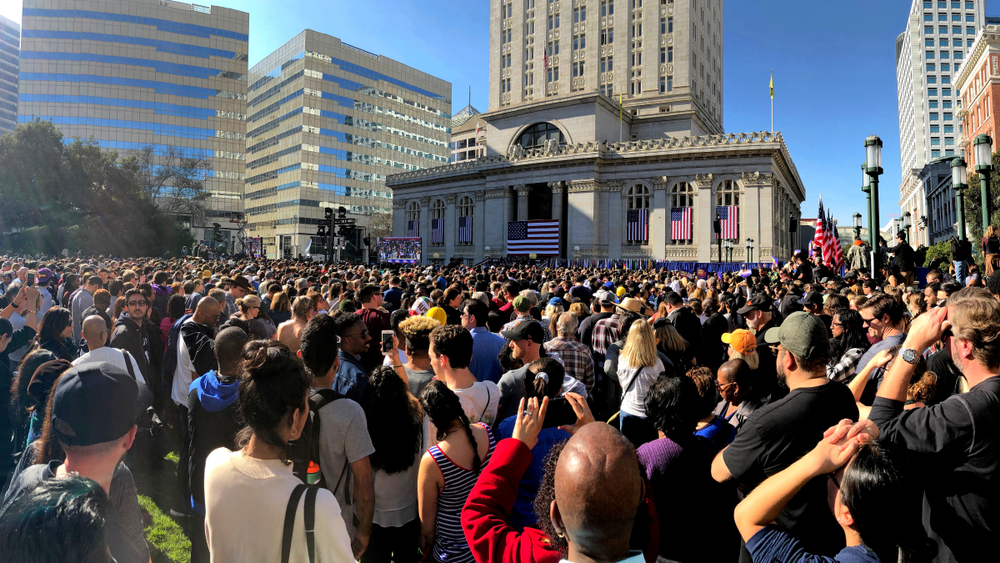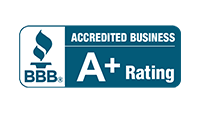
If you’re reading this, I assume that someone in your organization realized that the Mission and Vision statements were feeling a bit dated and are looking for best practices on how to construct a new Mission and Vision Statement.
Gotta get it done, check that box, and move on to the other initiatives desperate for your attention. I get it. But I would like to challenge the assumption that these proclamations to the world at large aren’t deserving of more time, consideration and thought before you assemble an internal committee.
If you want to skip a 10-minute read, here are the key points:
Mistakes to Avoid
- Don’t fake emotion
- Don’t make it boring or turn it into a thesis
- If you don’t believe it, don’t include it.
- Don’t claim to be what you’re not
Before I continue [pulls out soap box], first a short rant on committees: they are designed to minimize risk, if the group agrees, then it should be fine, and if it goes poorly: responsibility is spread across the group, so no one is in real danger of being fired for poor performance. It is great for self-preservation but tends to produce mediocre work products that are seen throughout businesses.
The rant continues…

Imagine with me, you’re the leader of an organization. And like a king, you’re about to step out onto the stage to make your proclamation to the world “This is why we are here and what we’re here to do!” Your time comes. You step out onto the stage. The huddled masses roar in your favor. You gesture that they calm themselves. The roar dissipates into a mild murmur as you pull out your notes from your jacket pocket. You put on your readers slowly, clear your throat, a sip of water… the anticipation is killing them. Then you look up from your notes and proudly announce to the population:
“To be one of the world’s leading producers and providers of entertainment and information, using its portfolio of brands to differentiate its content, services and consumer products.”
The crowd becomes very quiet… they look at each other indifferently. You feel uneasy. You get nervous. Start to sweat. You abruptly blurt out, “So expect big things….in the future… innovation… umm….. collaboration (uncomfortable silence)… thank you, all!”
You wave and run backstage. Your team waits for you inside with confused and embarrassed expressions.
Could you even tell who it was? That is Disney’s Mission Statement. Disney. The creators of your childhood wonder: they call it content. Your beloved, plush Mickey Mouse toy you couldn’t sleep without: consumer packaged goods.
In recent years they have patented holograms, avatars, and a roller coaster that jumps tracks. They have creative people. Who the hell wrote this? (probably the accounting department)
Here’s another:
“To be a company that inspires and fulfills your curiosity.”
Are you curious who it is?
It’s Sony. And it’s about inspiring as most of their products (I will concede that the FX3 is a solid entry-level professional video camera).
Most Vision and Mission Statements are useless.
Lots of companies have nice-sounding Mission, vision, or value statements.
Enron had a nice‐sounding Value Statement with 4 Values:
- Integrity
- Communication
- Respect
- Excellence
Their values were chiseled in marble in the main lobby but had little to do with the actual values of that corruption scheme.
Real company values, as opposed to nice‐sounding values, are shown by who gets rewarded, promoted, or let go. Real company values are behaviors and skills organizations value in fellow team members.
Culture is How an Organization Operates
Will your organization grow into a tightly-coupled monolith, independent silos, or highly aligned, loosely coupled culture?
Culture is often our best chance of continuous success for many generations of technology and people.
In a sense, the vision is your WHY, the mission is the WHAT, and Culture is HOW.
These create the guiding principles for how you expect your team to operate.
Culture is like a diet: we all have one and many business leaders pay them equal attention.
Done correctly, these statements aren’t just another initiative to check off; they can serve as change agents within an organization’s culture. They are moving the team in the direction of the culture that you are creating.
WARNING: like a bad diet, a bad culture can take months or years to fix (5+ years). So the best time to start fixing it was yesterday and the next best time is right now. Tick, tock.
What is your culture trying to cultivate?
The problem with vision and mission is they can easily turn into corporate fluff.
These declarations should have a very real role in your organization. It is the core of your strategy. It is how everyone in your organization knows what they’re supposed to match the company towards. It is how your customers immediately recognize what you’d do for them.
Vision: The change you want to see in the world. How will the world be better because of your company’s actions?
Mission: What is your company’s role in making that vision a reality?
View your mission as the goal(s) you have for yourself and your organization. Your vision is the goal(s) you have for your audience and the world at large.
Another filter that I recommend: If all of the managers on up are somehow unavailable at the moment a client is having a MAJOR issue. Could your team reflect on your statements and your proclamations to help solve the best path forward?
Example:
Our Vision: Every child in the United States can easily access virtual classrooms through high-speed internet.
Our Mission: To build out our innovative, affordable broadband network in areas of the U.S. that lack affordable, high-speed internet service.
If a customer was having issues paying for services, I would suspect that someone who had the above Mission/Vision would have employees who would work towards an amicable solution vs. telling them to “go pound salt”.
How to create an inspiring vision statement for a company
A vision is not an activity, but a description of a state. Such as: a world where every child, regardless of gender, ethnicity, or socioeconomic status, has the opportunity, ability, and freedom to participate in baseball without discrimination, and with the social, emotional, financial, and cultural support they need.
Your mission statement can’t address all of the above but target a focused element of it. A vision is braid, aspirational, driven by value and hope for a better future. A mission is targeted, focused, measurable, and actionable.
A vision is a statement about what your organization wants to become.
All members of the organization should be able to identify with it and it should help them feel proud, excited, and part of something much bigger than themselves. A vision should stretch the organization’s capabilities and image of itself. It gives shape and direction to the organization’s future
Visions range in length from a couple of words to several pages; the shorter it is, the easier it is to remember.
Effective vision statements are clear, concise, catchy, and memorable.
How to Write a Mission Statement for Your Business
A mission statement should answer three questions:
- What do we do?
- How do we do it?
- For whom do we do it?
An effective mission statement has these key characteristics:
- Descriptive: not empty fluff
- Inspiring: not dry
- Specific; not vague
- Unique: not generic
- Clear: not obscure, free from complex wording
- Concise: The fewer words the better; less than 25 if possible.
- Catchy: Snappy sounding without using slang or colloquialisms.
- Memorable: Easy to recall; easy to explain.
- If your teammates can’t remember it, they are unlikely to align their actions to it.
When properly constructed, a mission statement should provide a clear, concise description of an organization’s overall purpose.
CREATIVE EXERCISE:
Visions are meant to be inspirational, not specific. For consideration, here are several vision statements. See if you can identify the company (like school, the answers are in the back: end of the blog post):
- “To create economic opportunity for every member of the global workforce.”
- “To save our home planet.”
- “To help people and businesses throughout the world realize their full potential.”
- “Spread ideas.”
- “To accelerate the world’s transition to sustainable energy.”
- “To organize the world’s information and make it universally accessible and useful.”
- “To make people happy.”
- “Becoming the best global entertainment distribution service.”
- “To inspire tomorrow’s creators to use technology to build brighter futures for themselves, their families, and the world.”
- “Giving people the power to build community and bring the world closer together.”
- “To help humanity thrive by enabling the world’s teams to work together effortlessly.”
- “To attract and attain customers with high-valued products and services and the most satisfying ownership experience in America.”
- “To make the movement and management of money as simple, secure, and affordable as possible.”
Mission Statements provide more specifics; ie:
Vision: “Create economic opportunity for every member of the global workforce.”
Mission: “To connect the world’s professionals to make them more productive and successful.”
Apple
Vision: “To make the best products on earth and to leave the world better than we found it.”
Mission: “To bring the best personal computing products and support to students, educators, designers, scientists, engineers, businesspersons, and consumers in over 140 countries around the world.”
Southwest Airlines
Vision: “To be the world’s most loved, most efficient, and most profitable airline.”
Mission: “To connect people to what’s important in their lives through friendly, reliable, and low-cost air travel.”
We don’t want to sound like our competitors!
100% that is why another step in this creative process needs to be reviewing your competitors. Below is a glimpse of the process:
Vision Statements
CLIENT
Here we have two concepts we want to include in our final statement.
- To be recognized innovative frontrunner providing sustainable solutions in the markets we serve for a better future for the planet and people.
- A leading technology company for pine chemistry to make this world a cleaner place.
COMPETITOR 1
To be a respected leader in our industries, to take pride in our workplace, and to have a positive impact on our communities.
COMPETITOR 2
To become a respected and sustainable provider of innovation-driven solutions in the pine chemical and polymer markets, delivering exceptional value for our customers, shareholders, employees, and communities. To be a global leader in supplying specialty polymer and biobased chemical solutions, achieving sustainable growth through our innovation and diverse culture.
Mission Statements
CLIENT
We are in cooperation with nature to transform biobased raw materials into sustainable solutions for our customers around the world.
COMPETITOR 1
We strive to enhance the world through innovations that purify, protect, and improve. We aim to generate value for Ingevity and all its stakeholders by purifying, protecting, and enhancing the world around us, today and in the future.
COMPETITOR 2
Our team creates, produces, and sells biobased chemicals and specialty polymers that provide outstanding value and improve the lives of individuals globally. We develop, manufacture, and market specialty polymers and biobased chemicals that offer exceptional value through innovative and sustainable solutions, positively impacting our world. Our team also develops, manufactures, and markets specialty polymers and biobased chemicals that provide exceptional value through innovative and sustainable solutions, setting our customers’ products apart and enriching lives across a wide range of end-use markets.
Internal brainstorming/ideation focused on making them more inspirations/aspirational and HEAVILY influenced by my preference for shorter statements, which provides a possibility that someone might actually remember them (and they look nicer when you use them as graphics; ie walls that customers and teammates walk past). To achieve this end, I expanded the scope to include other brand promises; ie tagline and elevator pitch (which can be longer, but still succinct). Here’s where we landed:
Vision
Empowering a green future for people and planet.
Mission
Transforming biobased materials into sustainable solutions.
Tagline
Better, Sustainable Chemistry
Elevator Pitch
Lawter is an innovative organization transforming pine chemistry into sustainable solutions. We operate in cooperation with nature to transform raw, biobased materials across diverse markets on a global scale. Lawter serves the graphic arts, adhesives, specialty coatings, aroma chemicals, and synthetic rubber industries.
In the end, it wasn’t far off from the final edits made by the Senior Leadership Team at Lawter:
Vision: Empowering a green future with pine chemistry.
Mission: Transforming biobased materials into sustainable solutions.
While my ego loves that they were receptive to my advice, the bigger win is more difficult to measure. Will the teammates who walk the halls and see these messages and make small changes? Will those small changes gain momentum and snowball to influence others? Maybe. There are no guarantees in life, but I hope that maybe this initiative does help someone, at least one person, to make the world a better place for all of us.
That would be pretty cool.
Alright. If you read through this entire rant and you’re still not convinced… here is the Cisco cheat code:
“Shape the future of [insert industry] by creating unprecedented value and opportunity for our customers, employees, investors, and ecosystem partners.”
You’re welcome.
Of if you want some help to nail this entire process: call, text, or email me.
I’m always happy to help people elevate their organizations.
And I didn’t forget. Here’s the answer bank from above:
- “To create economic opportunity for every member of the global workforce.” LinkedIn
- “To save our home planet.” Patagonia
- “To help people and businesses throughout the world realize their full potential.” Microsoft
- “Spread ideas.” TED
- “To accelerate the world’s transition to sustainable energy.” Tesla
- “To organize the world’s information and make it universally accessible and useful.” Google
- “To make people happy.” Disney
- “Becoming the best global entertainment distribution service.” Netflix
- “To inspire tomorrow’s creators to use technology to build brighter futures for themselves, their families, and the world.” Verizon
- “Giving people the power to build community and bring the world closer together.” Facebook
- “To help humanity thrive by enabling the world’s teams to work together effortlessly.” Asana
- “To attract and attain customers with high-valued products and services and the most satisfying ownership experience in America.” Toyota
- “To make the movement and management of money as simple, secure, and affordable as possible.” PayPal





